This may be called a street, but it’s undeniably alley-like in appearance, snaking around the back of shops at the junction of Tottenham Court Road and Oxford Street.
It’s also an alley that has one very unusual feature that is often pointed out by people who know about it to their friends, who in turn share the story — of a remarkably tall narrow set of green doors in one of the buildings.
But more about those later.
The alley has been around for at least 300 years when the area was being developed, and shows up in John Rocque’s map of 1746, with part of the alley marked as Lloyds Court with the path next to the church still unnamed.
Historically, this part of London was known for its squalor and slums, as immortalised by Hogarth’s Gin Lane and First Stage of Cruelty. The building of New Oxford Street in 1844-7 was in part to clear the slums away, and by the end of the 19th century this part of London was mainly factories and commercial buildings.
By the late 19th century, the alley is still partially Lloyd’s Court (having gained the apostrophe) and the path beside the church is now Little Denmark Street. A lot of the factories still existed at the time, and with the huge Cross and Blackwell factory across the street, several of the buildings lining the alley were also occupied by Cross and Blackwell.
After the war, the whole length of the alley was renamed Flitcroft Street. The thing people will often comment about this alley though is the tall green doors.
This was a painter’s studio, with the building constructed on the site of an old school in 1903/4. Originally it had much smaller doors, barely one storey high, but later the building was modified and running the length of the interior is a long very tall corridor on which canvases could be hung to be painted for use by the West End theatres.
And to get those huge stage sets out of the building, they have the famous three-storey high doors.
Elms Lesters constructed the building at the start of the 20th century, and used it as a scenic painting studio for the West End theatres. Although it’s generally assumed that the building was purpose built as a new structure, more recent research suggests that the early 1800s school building that used to be here was reused in part of the structure.
The use of the building primarily for painting stage sets stopped a long time ago though, and although it has been mainly offices since the 1980s, the tall space for painting stage sets was retained as a painting studio, and occasionally used for stage set painting. Although crammed into the narrow alley, it’s fully lit internally as the entire roof is glazed, as that’s how the building was lit for the painters.
A current plan exists to refurbish the interior offices. Externally the building won’t change, other than being cleaned and repaired, but the huge green doors will be backed with a glass wall, so that they can be left ajar and let light into the offices.
An interesting quirk is that the building and land is owned by The Carter’s Educational Foundation, and has been ever since 1727. So a few year’s time marks their 300th anniversary as the landlord. Carter’s Educational Foundation is a charity that also owns two other buildings on Flitcroft Street and uses the income to support education in Nottingham, which carries on to the present day.
On the corner opposite the tall green doors, was for a very s the site of Billie’s Club opened in October 1935 as a gay club hosting camp cabaret and music hall acts. At a time when homosexualtity was illegal, the club was raided by the police a year later, and they used blotting paper to test those arrested for the use of makeup, and some of the powder puffs seized are now in National Archive. Detective Sergeant George Miller reported that the ‘majority of the males present were of the nancy boy type. They used makeup and their hair was waved or dyed’
The southern end of the alley is dominated by two similar named properties — the Pheonix Garden and the Pheonix Theatre.
The garden is a mini nature reserve in the heart of the West End and was created from wasteland in the 1980s. The theatre building is from 1930, having been built on the site of an old music hall that had itself been built on a block of several factories that were bought up and demolished. There is another building down here worth looking at in No 12 Flitcroft Street opposite the back of the theatre is an 1878 warehouse, now offices, but still retaining a rather nice brick arched entrance over stone columns and the open gates where the old warehouse deliveries were hoisted up.
A modestly amusing incident occurred in March 1952, when 35 black cab drivers sat down for supper in the Night Taxi Drivers Club, which was based in the alley. With their taxis blocking Charing Cross Road though, when asked to move their cabs, they instead marched en-masse down to Bow Street police station and it took the police over an hour to take statements of protest from them all.
Ever since though, the alley has generally had a quiet life, but it was shaken by an explosion in October 1992, when an IRA bomb was placed inside a telephone box in the alley and detonated in the evening. Fortunately, it caused minimal physical damage but did cause a large area to be evacuated at the height of the rush hour.
These days though, the alley is a busy but narrow route to get around the back of the Centrepoint tower and access the myriad of narrow streets in St Giles.

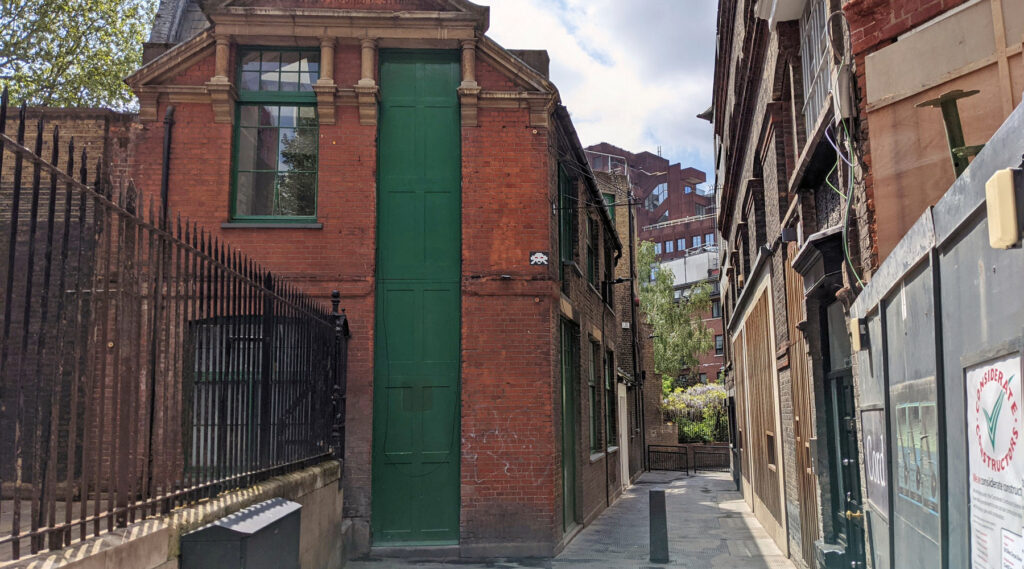
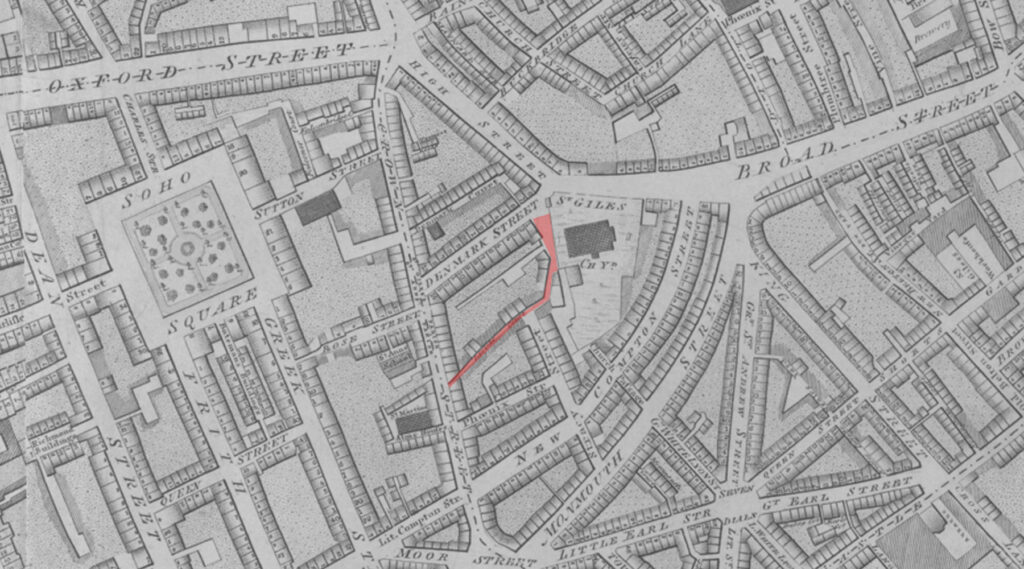
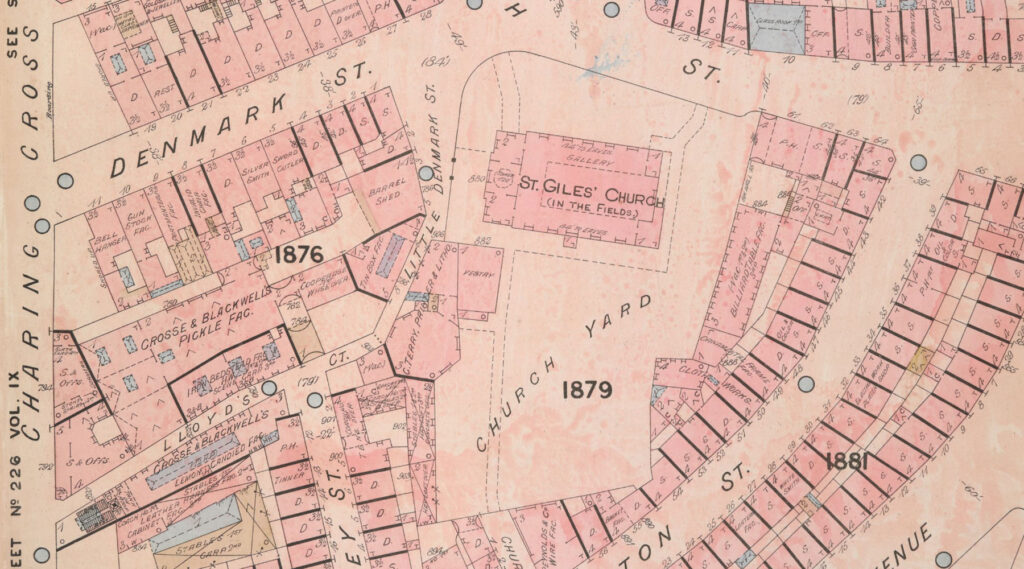
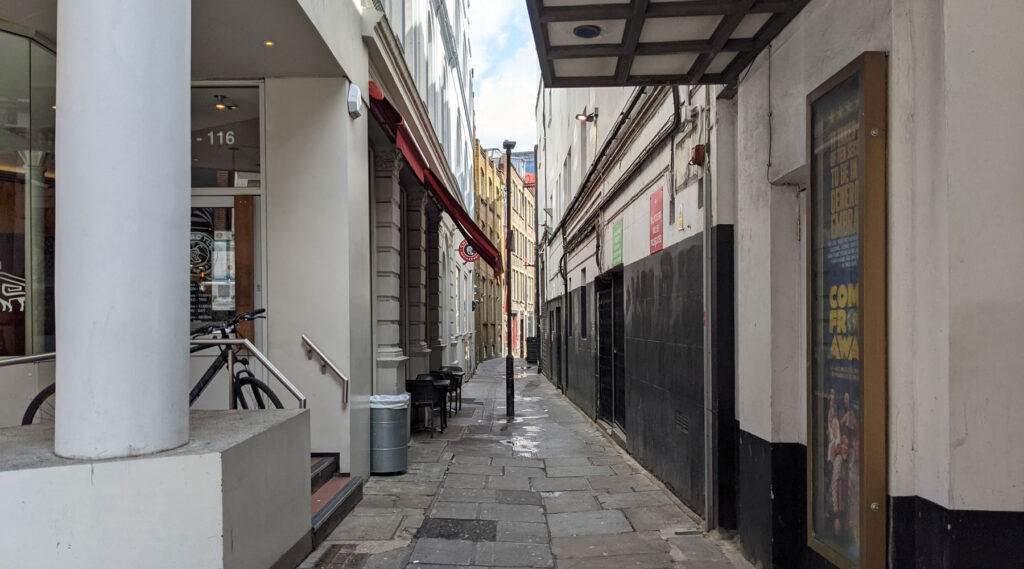

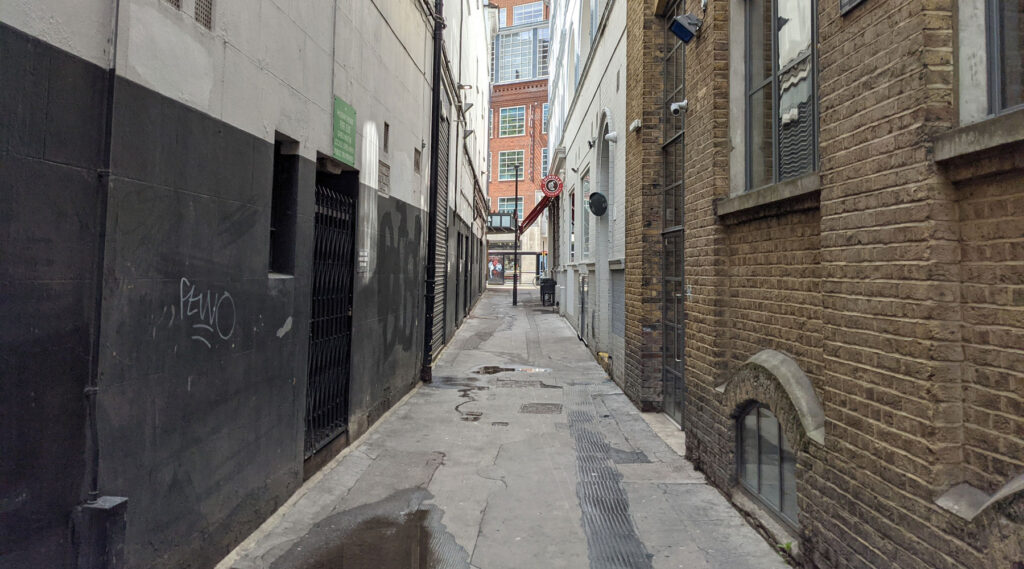






Ian
I suspect it’s Phoenix, not Pheonix.
There was a printing company in Flitcroft St for around 50 yrs, originally called The Raynard Press, then renamed V. Cooper & Partners in the 1960’s.
An old advertisement describes 15 Lloyds Court as being the address for the first premises belonging to David Napier a precision engineer who moved there around 1815.
His business was to become D Napier & Son Ltd, an engineering company that created a wondrous range of products including printing presses, early motor cars, the Napier ‘Lion’ and ‘Sabre’ aero engines, the ‘Deltic’ diesel engine and much more.
Visit http://www.npht.org for more information.
My question (as archivist for the Napier Power Heritage Trust) is where exactly was No.15 Lloyd’s Court located?
From photographs held by us it looks as though 15 Lloyds Court was accessed through a gated entrance adjacent to what was an Iron Bedstead Factory as shown in Goads Insurance plans (above).